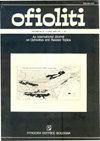内部ossa-morena带蛇绿岩序列的地球化学和u-pb锆石年龄:伊比利亚西南部流海残余
IF 1.3
4区 地球科学
Q2 GEOLOGY
引用次数: 27
摘要
伊比利亚西南部早古生代的地球动力学演化被认为是由里海的开放主导的。一般认为,里海是由冈瓦纳大陆北缘的阿瓦洛尼亚等近冈瓦纳大陆板块在晚寒武世-早奥陶世漂移形成的。里海的闭合是冈瓦纳和劳鲁西亚大陆碰撞的最终结果,碰撞产生了瓦里斯坎造山带。Ossa-Morena带是一个近冈瓦纳地体,它保存着蛇绿岩的分散碎片-内部Ossa-Morena带蛇绿岩序列(IOMZOS)。IOMZOS的最终拼接显示了一个完整的海洋岩石圈序列,其地球化学特征与海底玄武岩相似,没有任何造山指纹和/或地壳污染。IOMZOS呈逆冲和叠瓦状,具有高压岩性。根据构造、岩石学和全岩地球化学资料,作者认为IOMZOS代表了来自大洋的海洋岩石圈碎片。锆石SHRIMP U-Pb年代学数据表明,IOMZOS的年龄约为480 Ma,为这一时期伊比利亚西南部的海洋发育提供了证据,加强了早奥陶世时期雷海作为近冈瓦南地体中广阔海洋的解释。本文章由计算机程序翻译,如有差异,请以英文原文为准。
GEOCHEMISTRY AND U-PB ZIRCON AGE OF THE INTERNAL OSSA-MORENA ZONE OPHIOLITE SEQUENCES: A REMNANT OF RHEIC OCEAN IN SW IBERIA
The Early Paleozoic geodynamic evolution in SW Iberia is believed to have been dominated by the opening of the Rheic Ocean. The Rheic Ocean is generally accepted to have resulted from the drift of peri-Gondwanan terranes such as Avalonia from the northern margin of Gondwana during Late CambrianEarly Ordovician times. The closure of the Rheic Ocean was the final result of a continent-continent collision between Gondwana and Laurussia that produced the Variscan orogen. The Ossa-Morena Zone is a peri-Gondwana terrane, which preserves spread fragments of ophiolites - the Internal Ossa-Morena Zones Ophiolite Sequences (IOMZOS). The final patchwork of the IOMZOS shows a complete oceanic lithospheric sequence with geochemical characteristics similar to the ocean-floor basalts, without any orogenic fingerprint and/or crustal contamination. The IOMZOS were obducted and imbricated with high pressure lithologies. Based on structural, petrological and whole-rock geochemical data, the authors argue that the IOMZOS represent fragments of the oceanic lithosphere from the Rheic Ocean. Zircon SHRIMP U-Pb geochronological data on metagabbros point to an age of ca. 480 Ma for IOMZOS, providing evidence of a well-developed ocean in SW Iberia during this period, reinforcing the interpretation of the Rheic Ocean as a wide ocean among the peri-Gondwanan terranes during Early Ordovician times.
求助全文
通过发布文献求助,成功后即可免费获取论文全文。
去求助
来源期刊

Ofioliti
地学-地质学
CiteScore
2.40
自引率
7.70%
发文量
1
期刊介绍:
Since 1976, Ofioliti provides an international forum for original contributions and reviews in the field of the geodynamics, petrology, geochemistry, biostratigraphy, stratigraphy, tectonics and paleogeography applied to ophiolitic terrains and modern oceanic lithosphere, including their sedimentary cover. Studies of topics such as geodynamics of the mantle, the evolution of orogens including ophiolites and paleoceanography are also welcome
 求助内容:
求助内容: 应助结果提醒方式:
应助结果提醒方式:


